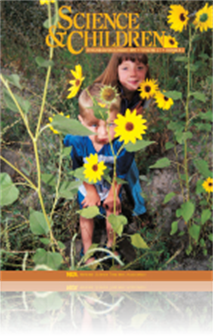All Science and Children resources
Journal Article
Editor's Note: It <b>Is</b> Exciting
Science and Children’s editor shares thoughts regarding the current issue and introduces NSTA's SciLINKS® connection....
Journal Article
Problem Solver: Teaching Tropisms
Plants are found in most locations in the world and have the remarkable ability to capture and store energy from sunlight. Without the green plant’s ability to carry out the process we call photosynthesis, Earth would be a lifeless, barren planet. ...
Journal Article
Studying Our Skin: Students learn about skin using the learning-cycle structure
Investigative activities enabling students to explore the many purposes of our skin can create meaningful understanding of its functions. These activities can also help children construct an understanding of the skin as an always present but constant...
Journal Article
Teaching Teachers: Day of Science
"Day of Science" provided students an opportunity to sample various hands-on activities and also provided superb learning and practice opportunities for visiting preservice teachers. This article offers information on how the project came about and h...
Journal Article
When John Dewey’s name appears somewhere, many people imagine a librarian inventing an organizing system for shelving library books, but this is a different Dewey. Here the author is talking about John Dewey (1859–1952), the educator whose ideas ...
Journal Article
A Workshop Approach: Using learning centers to teach early childhood science
The science workshop approach is a method of organizing learning centers in developmentally based primary programs. The approach centers on providing a series of meaningful experiences around core science concepts. These experiences are presented in ...
Journal Article
The Nature of Haiku: Students use haiku to learn about the natural world
Haiku takes advantage of children’s curiosity and interest in nature. The open-ended nature of haiku writing is motivational and student centered. Also, the simplicity of haiku allows children to have successful writing experiences. This article de...



